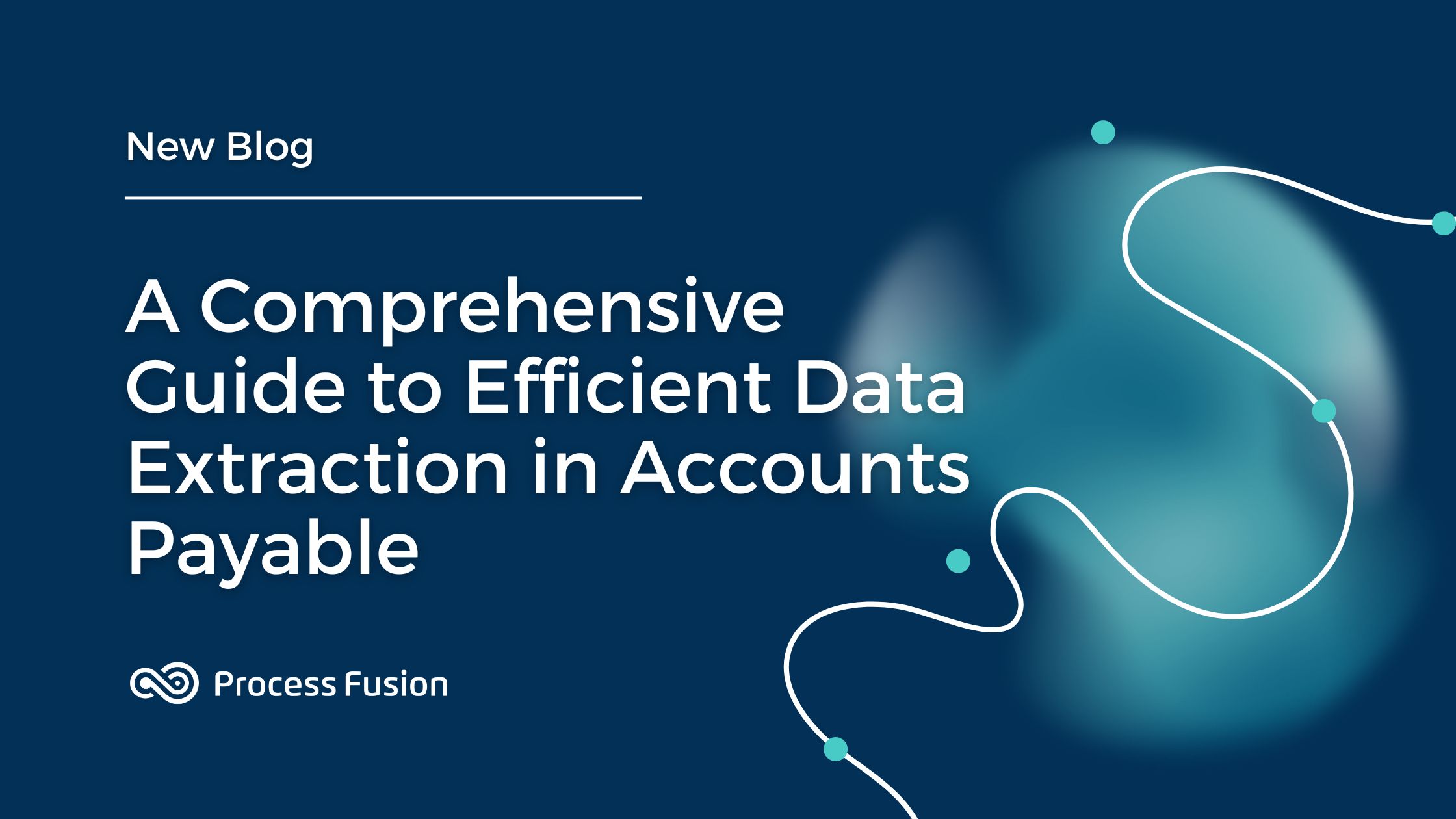
Managing invoices from a handful of suppliers may seem easily achievable. However, as the number of suppliers grows, this task becomes increasingly difficult.
When invoices are being processed manually within your accounts payable division, the team faces a significant volume of documents, each needing to be authenticated against its corresponding purchase order. Following this, your AP team has to distribute checks and record updates in the financial accounting system.
This time-consuming and mundane procedure leaves your business vulnerable to expensive errors and fraud. Moreover, it increases the complexity of conducting audits.
Accounts Payable (AP) automation may be the solution.
Let’s dive into the definition of AP automation and its inner workings. We’ll also explore how you can quickly start implementing AP automation software, such as PF360 APX.
What is AP Automation?
Accounts Payable (AP) automation is the technology that digitizes managing and paying a company’s bills. Instead of manually tracking the invoices received from multiple suppliers, verifying them against purchase orders, distributing checks, and updating financial systems, AP automation streamlines all these steps and drastically reduces paper use. The process includes the following steps:
- Receive a supplier invoice
- Enter data into accounting software
- Verify the invoice with a corresponding purchase order
- Get invoiced approved
- Write and mail a check
- File in a filing cabinet
While these steps might appear simple at first glance, processing one invoice manually can take an average of 10 days, significantly increasing the possibility of errors in data entry and invoice matching.
By adopting AP automation, you can reduce manual processes and optimize invoice processing. This will enhance vendor relations and position you to seize early payment discounts.
How Does AP Automation Work?
Invoices directed to your organization may arrive in multiple formats, from PDFs, physical paper invoices, Word documents, and more. Unfortunately, manually transferring this data into your accounting system is labour-intensive and subject to potential errors.
AP automation software utilizes Optical Character Recognition (OCR) technology that digitally extracts information from invoices, eliminating the need for manual data entry.
The invoice approval process becomes more streamlined with a digital workflow that can be customized based on the company’s needs. The system can route invoices to the appropriate personnel for approval or the Enterprise Resource Planning (ERP) accounting system for archival. It can also send reminders to speed up the process.
Furthermore, the system automatically processes payments according to preset schedules and terms, eliminating the need to write manually and mail checks. Once the invoice is paid, the transaction is recorded in the system, making maintaining accurate, audit-ready records easier. Therefore, AP automation provides a holistic solution, simplifying operations and creating a more efficient accounts payable department.
What Are the Key Benefits of AP Automation?
Let’s explore some of the main advantages of utilizing AP automation:
Eliminates Repetitive Tasks Like Data Entry
Direct costs include expenses for paper, ink, and storage, while indirect costs involve the time spent manually entering data into accounting systems and chasing down signatures. 51% of organizations identify manual data entry and inefficient procedures as one of the main concerns in their AP process. This is a pain point for 37% of businesses, while 33% of organizations deal with the issue of lost or misplaced invoices. AP automation significantly reduces the time and effort expended on manual data entry tasks, substantially increasing productivity. It allows your team to focus on higher-value tasks, like strategic decision-making or high-priority projects.
Helps Prevent Instances of Fraud
Nearly 65% of organizations were victims of payment fraud attacks in 2022. The most common types of Accounts Payable Fraud include billing schemes, check fraud, ACH fraud, expense reimbursement fraud, kickback schemes, and fake or duplicate employee invoices. Through advanced features like duplicate payment alerts and audit trails, AP automation systems provide stronger control mechanisms that drastically reduce the possibility of fraudulent activities or human errors in the finance department.
Lowers Invoice Processing Costs
On average, companies spend $9.25 to process a single invoice. By automating your invoice processing, you can lower your overhead and operational costs by up to 80%, reducing the cost per invoice to $2.25.
Keeps Clear Audit Trails
An accounts payable audit is a formal assessment of your company’s financial records, typically conducted by internal or third-party auditors. It can be quite time-consuming to prepare for independent audits manually if your business needs one. AP automation provides a digital footprint of every transaction, creating a transparent and easily traceable audit trail, facilitating compliance, and easing audits.
How to Automate Your AP Process in 5 Steps
-
Define Your Accounts Payable Goals
Clarify your accounts payable goals before automation. These could be reducing processing costs, increasing accuracy, or preventing fraud.
-
Identify Organizational Requirements
To take full advantage of AP automation, you must evaluate your current AP situation to pinpoint precisely what you need for effective automation. Review your AP processes and identify any gaps. Considering different aspects of your operations, such as existing workflows, invoice volumes, software compatibility, and specific functionalities, is essential. Understanding these requirements will guide you in choosing an automation solution that accommodates your unique circumstances and seamlessly transforms your accounts payable processes.
Check Out This Free Checklist That Reveals 20 Questions To Ask When Considering An AP Automation Solution
-
Evaluate AP Automation Vendors
Having established your accounts payable goals, selecting a service provider is the next crucial step in your AP automation journey. Performing comprehensive research and evaluation of potential vendors is critical in this process.
Here are some features to consider when evaluating AP automation vendors:
Functionality
When choosing AP automation software, ensuring its features align with your unique needs is imperative. Review your functionality checklist and confirm that the potential software fulfills all defined requirements. If a particular functionality is not offered, consider a different vendor. Take advantage of any available software demos to explore their usefulness first.
Ease of Use
The value of a user-friendly automation platform is immense. Software with a complicated interface or a steep learning curve could significantly discontinue user adoption. Ideally, the platform should present a clean, straightforward interface and require no coding knowledge.
Mobility
The AP process should not depend on static locations or office-based individuals. The chosen AP software should offer inherent mobility features to prevent workflow disruption, even when the manager is away. The software should be operable and accessible from devices like smartphones and tablets.
Integrations
Considering the likelihood of ERP software already being integrated within your company’s operations, selecting an AP platform compatible with these existing systems would be strategic. Such integration fosters improved productivity and ensures consistent data accuracy across all platforms used within the business.
Security
Robust security measures are non-negotiable when choosing an AP platform. Unauthorized users should not be able to initiate workflows or approve invoices. A secure solution should offer robust access controls to prevent unauthorized access or misuse.
Cost
AP automation solutions come with varying price tags. Though more comprehensive software may command higher prices, establishing a budget in collaboration with finance teams is critical to guide the selection process.
-
Automate Your AP Processes in Phases
AP Automation is a continuous journey, not a one-off event. Start small by automating a section or a particular process in your AP operations, then monitor its performance. Observing the effects of automation allows for troubleshooting and optimization. After initial refinement, you can consider expanding the automation to other areas. Gradual implementation mitigates risk and allows your staff to adapt to changes in responsibilities and workflow.
-
Integrate into Your ERP Systems
It needs to integrate seamlessly with your existing Enterprise Resource Planning (ERP) system to extract optimal value from AP automation. A seamless integration of these systems ensures automated data flow between different business processes, fostering a balanced financial management system. This step is crucial for a comprehensive and collective view of business operations and to reap the real benefits of AP automation.
AP Automation Best Practices
Successful AP automation relies on execution – right planning, best approach, and ongoing management. Here are some best practices:
Strategic Planning
Your AP automation plan should align with your overall business strategy and objectives.
Involve Stakeholders
Ensure all relevant stakeholders are involved in the automation process to ensure seamless adoption. This includes representatives from finance, IT, procurement, and any other departments that interact with invoices or payments.
Periodic Evaluation
As technologies evolve, your AP automation process should dynamically adapt. Regularly evaluate your system to ensure it remains effective and efficient.
Training
To alleviate resistance to change and ensure maximum output, train your team on how to use the automation solution.
Let Your AP Work Flow
In conclusion, AP automation offers a viable solution for businesses keen to minimize expenses, streamline their AP process, and enhance efficiency. Like any significant change in business operations, careful planning, preparation, and execution are key to succeeding in AP automation.
With PF360 AP Xpress, the ultimate AP Automation Starter Pack, you can automate your entire AP process, quickly meeting 50% of your automation needs upfront. It also allows you to tailor the solution to suit your department’s transformation vision as your business grows.






